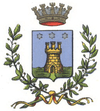Marigliano
| Marigliano | ||
|---|---|---|
| Comune | ||
| Metropolitan City of Naples | ||
| ||
 Marigliano Location of Marigliano in Italy | ||
| Coordinates: 40°56′N 14°27′E / 40.933°N 14.450°E | ||
| Country | Italy | |
| Region | Campania | |
| Frazioni | Lausdomini, Casaferro, Miuli, Faibano, Pontecitra, San Nicola | |
| Government | ||
| • Mayor | Antonio Sodano | |
| Area | ||
| • Total | 22.6 km2 (8.7 sq mi) | |
| Elevation | 30 m (100 ft) | |
| Population (1 April 2009) | ||
| • Total | 30,263 | |
| • Density | 1,300/km2 (3,500/sq mi) | |
| Demonym(s) | Mariglianesi | |
| Time zone | CET (UTC+1) | |
| • Summer (DST) | CEST (UTC+2) | |
| Postal code | 80034 | |
| Dialing code | 081 | |
| Patron saint | Saint Sebastian | |
| Saint day | 20 January | |
| Website | Official website | |
Marigliano is a town and comune of the Metropolitan City of Naples, Campania in Italy.
Geography
The town lies 19 km from Naples. Nearby towns include: Acerra, Brusciano, Mariglianella, Nola, San Vitaliano, Scisciano, Somma Vesuviana.
History
Archaeological findings have proved that a settlement existed in the area of Marigliano as early as the 1st-2nd centuries BC. Among historians of the region, Turboli thinks that the area is where consul Claudius Marcellus set his camp during the war against Hannibal, this would explain the Roman grid plan of its road network. Later, legionaries' families settled there, giving birth to the town named after one of the most influential ones, the "Marii", hence Marianum. Of a different opinion another historian, Ricciardi, believes that the town was built around an old villa own by the Gens Maria The first document mentioning the town dates however to 917 AD. It was a possession of the Mastrilli family from 1644 to 1799, when its last Duke of Marigliano, Giulio Mastrilli, was arrested during the Napoleonic invasion of Italy. In 1806 it became a commune.
Main sights
- Church of Santa Maria delle Grazie, built around 1000. It was enlarged in the early 18th century by Domenico Antonio Vaccaro. The tuff bell tower, standing at c. 40.3 m, is from 1494. The upper small cupola, covered by yellow maiolica, was destroyed in the 1980 earthquake, but has been rebuilt in the same shape but with different materials.
- Ducal Castle, known from the 12th century. Of the medieval edifice, the square plan with the angular towers remain.
- Church of the Annunziata with a late-Gothic apse. It houses a polychrome wooden polyptych in the high altar, in turn including a late-15th century triptych
- Monastery of St. Vitus
Organised crime
In October 2000, the Italian Parliament approved the findings of a commission which studied Camorra activities in Campania.[1] According to this source, Marigliano is firmly under the control of the Camorra, in particular the group led by Antonio Capasso. This group took advantage of the efforts of law enforcement that eliminated its main enemy, a Camorra group led by the Mazzarella family that was located in Ponte Citra, a district of Marigliano.
Social life and economic activities are strongly influenced by the Camorra. One of the main activities is the illegal treatment of industrial and urban waste in the Marigliano countryside, a large region containing Nola, Acerra and Marigliano itself.
Health
The scientific journal The Lancet Oncology published a 2004 study by the Italian researcher Alfredo Mazza, a physiologist at the Italian CNR (Centro Nazionale per la Ricerca); this study revealed the terrible situation in the countryside around Marigliano and the negative impact on its people's health. He demonstrated that deaths due to cancer are much higher than average in that region relative to the European average, dubbing it the "Death Triangle".[2]
Twin towns
 Madison, New Jersey, USA, since 2006
Madison, New Jersey, USA, since 2006
See also
Notes and references
- ↑ Doc. XXIII n. 46 Report of the Parliamentary Commission on the Camorra in Campania (24 October 2000) (Italian)
- ↑ Novella de Luca, Maria; del Bello, Giuseppe (2004), "Discariche piene di rifiuti tossici quello è il triangolo della morte", La Repubblica, 31 (in Italian), August 2004
